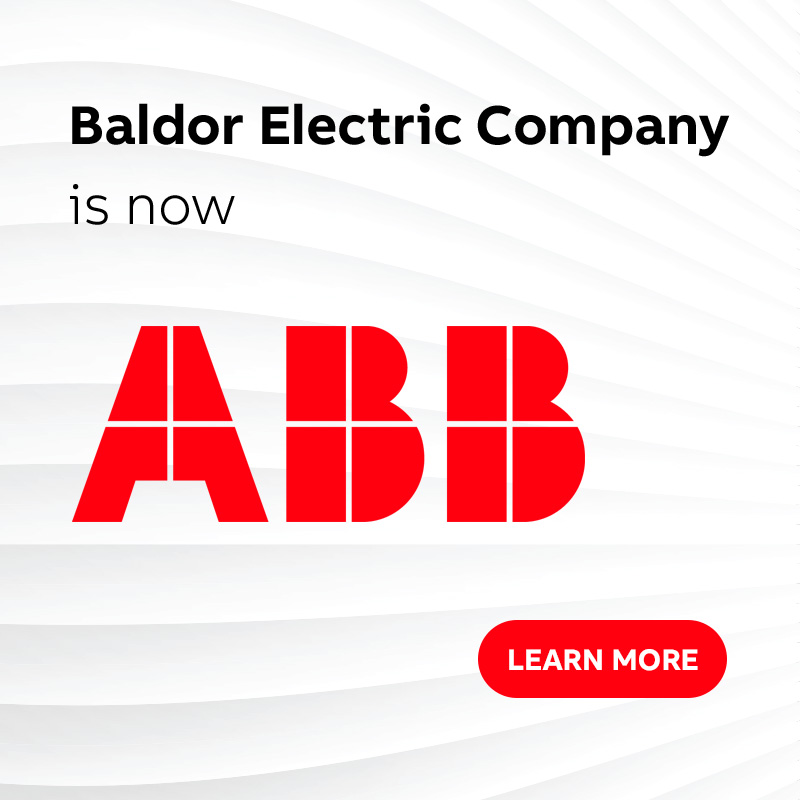
Detail
Cooling towers, air-cooled condensers and air-cooled heat exchangers
Click here to discover ABB’s Baldor-Reliance direct drive motors.
What are the differences between cooling towers, air-cooled condensers and air-cooled heat exchangers?
Any process that generates power or refrigeration also produces heat, and this heat must be discharged into the atmosphere. This is true for any such system, whether they are small electronics, internal combustion engines, computer server rooms, building air conditioning systems or large manufacturing plants. In the past, water – from a river, lake or other body of water – was the simplest, most cost effective and efficient method to cool large facilities. The water would be directed to a plant heat exchanger, used to cool the system, and the heated water would then be returned to its source. While effective for the process, this raising of water temperatures can have a detrimental effect on the environment and the life within the water system.
Because of restrictions on thermal discharges to natural bodies of water, most facilities now rely on some type of closed-cycle cooling system. Evaporative systems, also known as wet-cooling systems (such as cooling towers) are an economical choice where an adequate water supply available, but this is not always the case. Air-cooled heat exchangers (ACHEs) are another option. Air-cooled or dry-cooling systems are a common choice for electronics, air conditioning and refrigeration applications where cooling water is unavailable or not cost effective, or when high-temperature fluids must be cooled. Other than the availability of water, there are other conditions that determine the most effective cooling method, and in addition to the two types mentioned above, there are several other options to consider when designing a cooling system for a facility. In this article, we will discuss four of those option: air-cooled heat exchangers, air-cooled condensers, cooling towers and chillers.
1. Air-cooled heat exchangers
Air cooled heat exchangers (ACHE) are just one type of heat exchanger. In the simplest terms a heat exchanger does exactly what its name says: it exchanges heat from one source to another – usually from a fluid to a fluid or a fluid to a gas. Again, as the name implies, an air-cooled heat exchanger uses ambient air as the cooling source. ACHEs cool process streams with ambient air as the cooling medium rather than water. This pressure vessel cools a circulating fluid within finned tubes by using an axial fan – powered by an electric motor – to force ambient air over the exterior of the tubes. The most common example of an air-cooled heat exchanger is the coils on an air conditioning window unit, and this design increases in scale as cooling needs increase. Air-cooled heat exchangers are commonly used in the chemical, oil and gas industries; pulp and paper; food processing and in power generation applications.
2. Air-cooled condensers
A condenser is a type of heat exchanger, but the difference between an ACHE and an air-cooled condenser (ACC) is that the ACC cools by transforming a substance from a gaseous to a liquid state. An ACC is made up of modules that are arranged in parallel rows. Each module contains several fin tube bundles, as in an ACHE. Within the tubes, fluid is condensed, and a bottom mounted axial fan - powered by an electric motor - forces air across the heat exchange area of the fin tubes. This cool ambient air flow outside the finned tubes is what removes heat. The heat is then rejected directly into the atmosphere. Since ACCs do not require a large volume of cooling water, they are often used at power plants in regions where water is not be available, or where its use is restricted or expensive.
3. Cooling towers
A cooling tower is a specific type of heat exchanger. As with air-cooled condensers, all cooling towers are heat exchangers, but not all heat exchangers are cooling towers. A cooling tower is a water cooling contact exchanger in which cool air and hot water are put into direct contact. During the contact, a small portion of water - about 3 percent - is evaporated, reducing the temperature of the water circulating through the tower. The movement of the air inside the tower can be accomplished by natural draft, but more often, axial flow fans - mounted at the top of the tower and powered by cooling tower motors - are used to move the air. These systems are known as induced draft cooling towers. The moving air will carry the heat through evaporating water from the cooling tower into the atmosphere. The water to be cooled is distributed in the tower by spray nozzles, splash bars, or film fill. For the reason, the inside of a cooling tower is an extremely hot and damp environment. Cooling towers can be found in power and chemical processing plants, steel mills, and many manufacturing facilities requiring process cooling, as well as large commercial buildings such as airports, hospitals, hotels and schools.
Which to choose?
There are several considerations to take into account when specifying a cooling system for a facility. Probably the most important is the availability of an ample, cost-effective water source. But, even if water is readily available, there may be environmental regulations or other usage limits that may affect the feasibility of using water as a cooling medium. Other considerations include temperature ranges, quantity of material to be cooled and size of the facility. Regardless of the chosen cooling system, fan motor selection and regular maintenance are essential to ensuring long life and that the entire system runs as efficiently, quietly and safely as possible.

